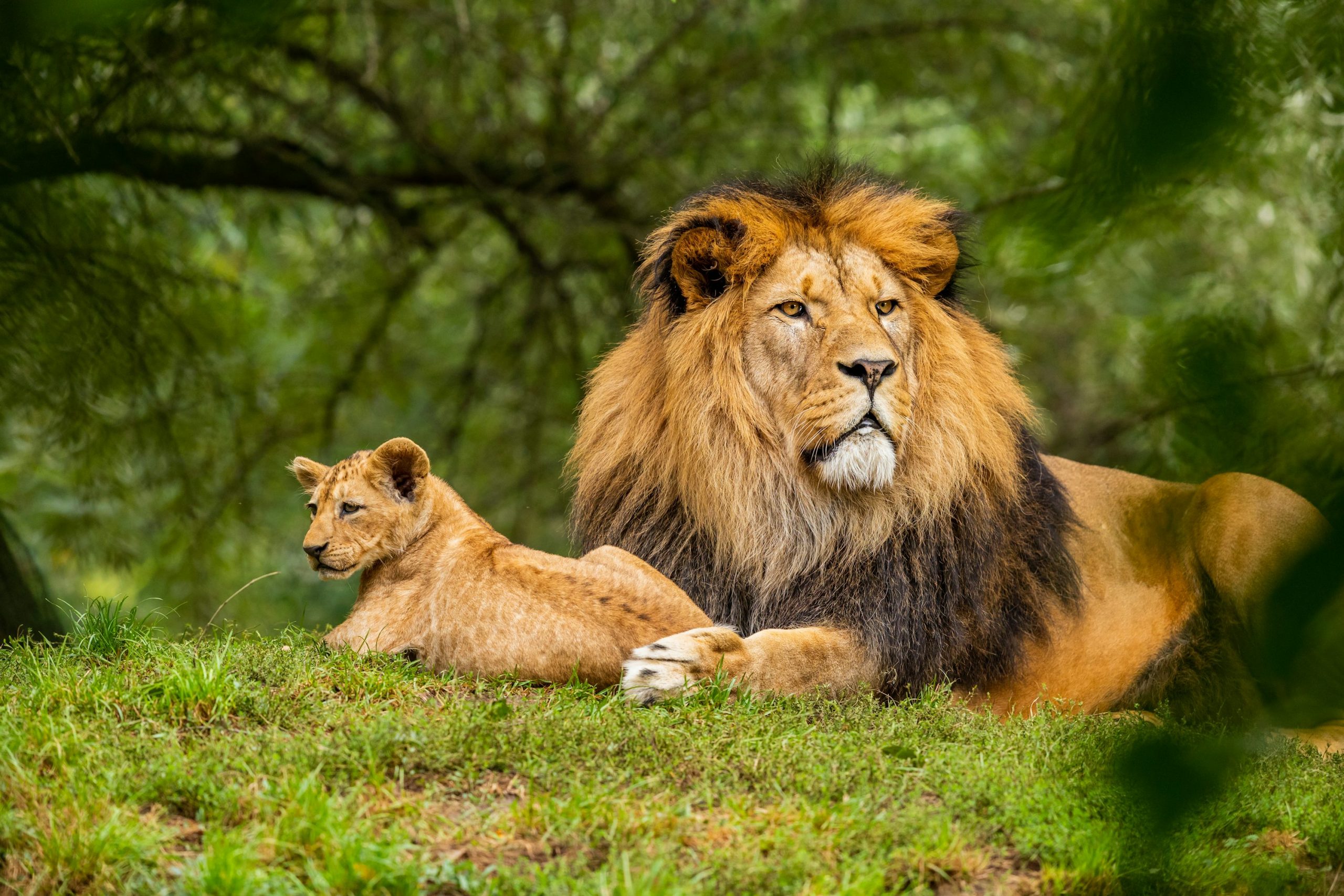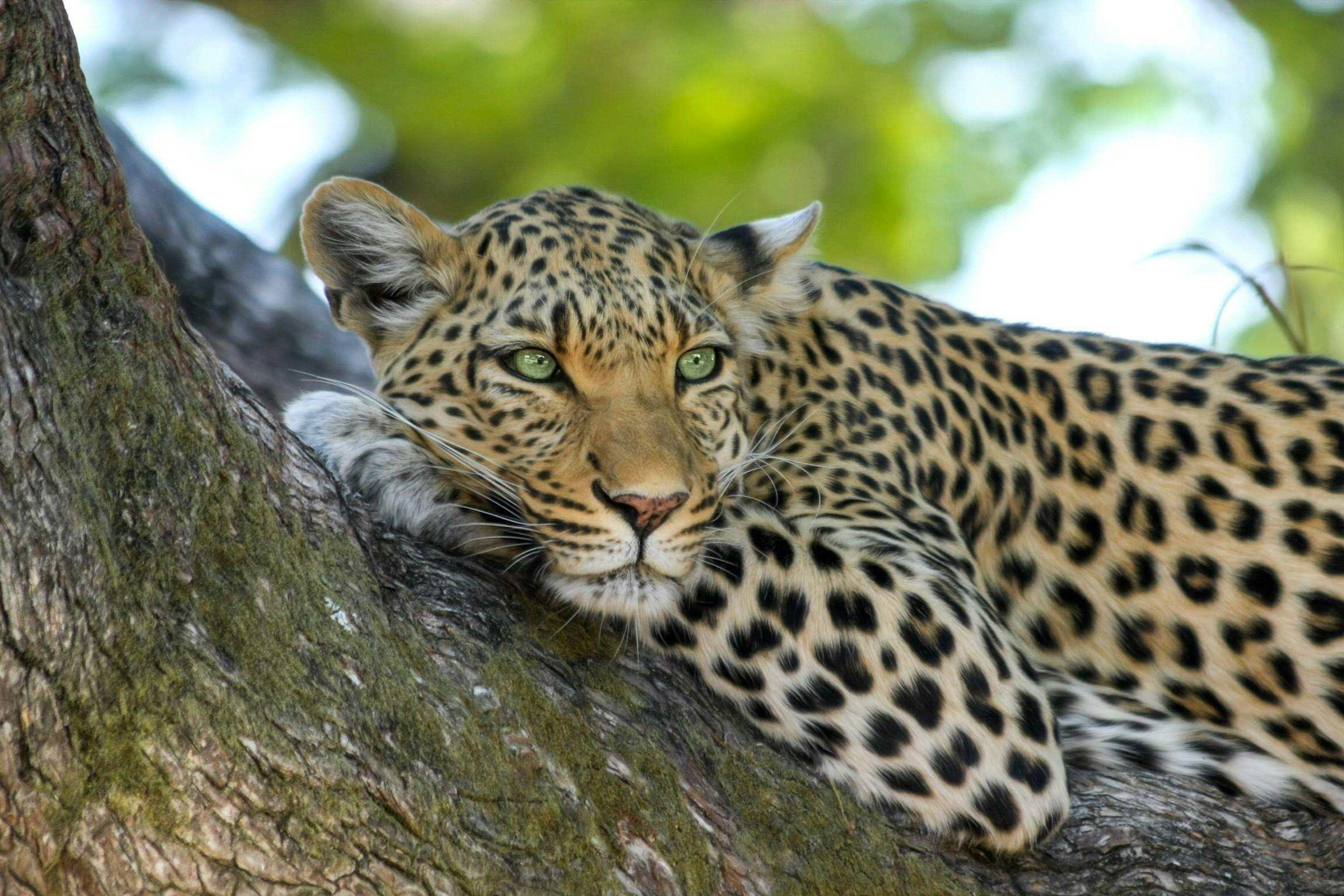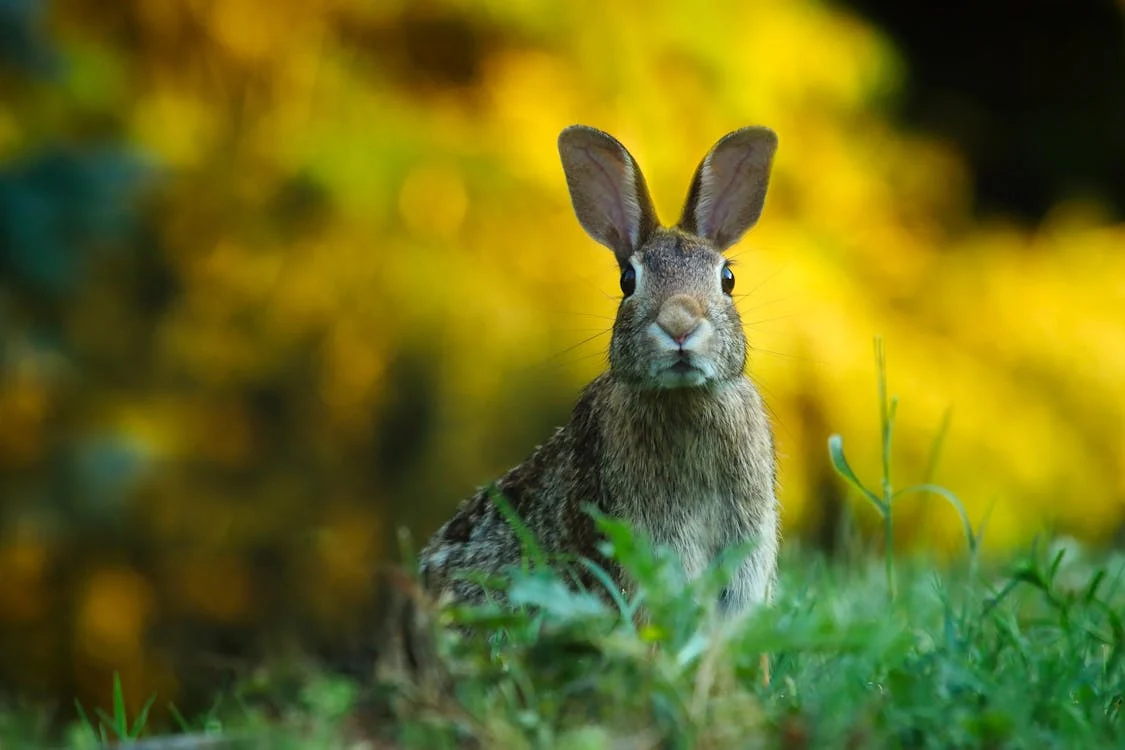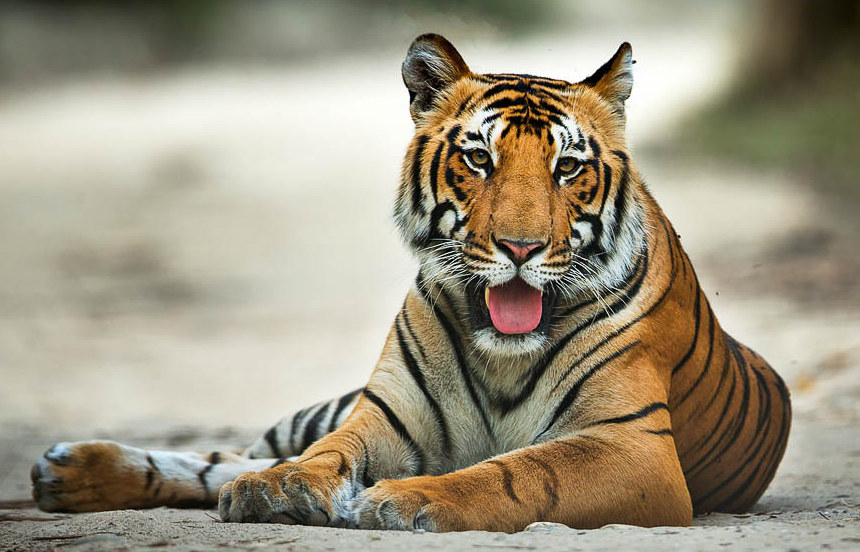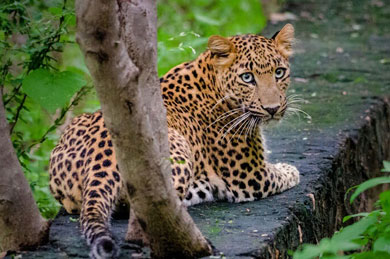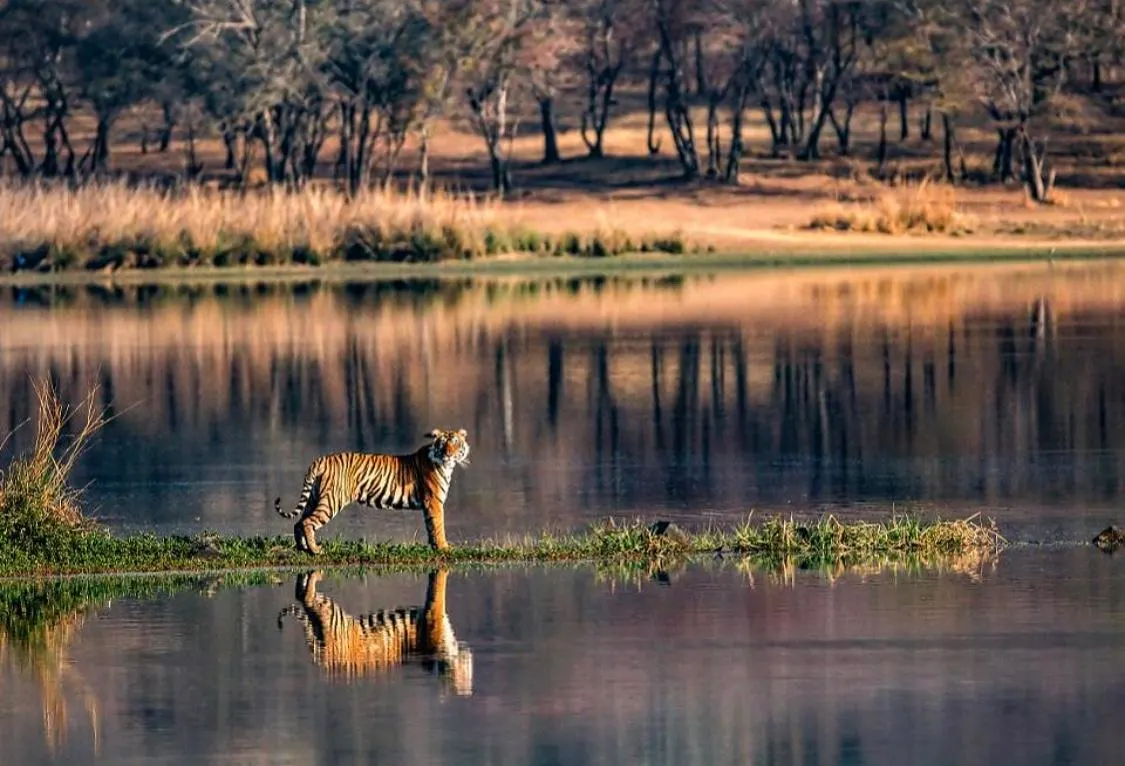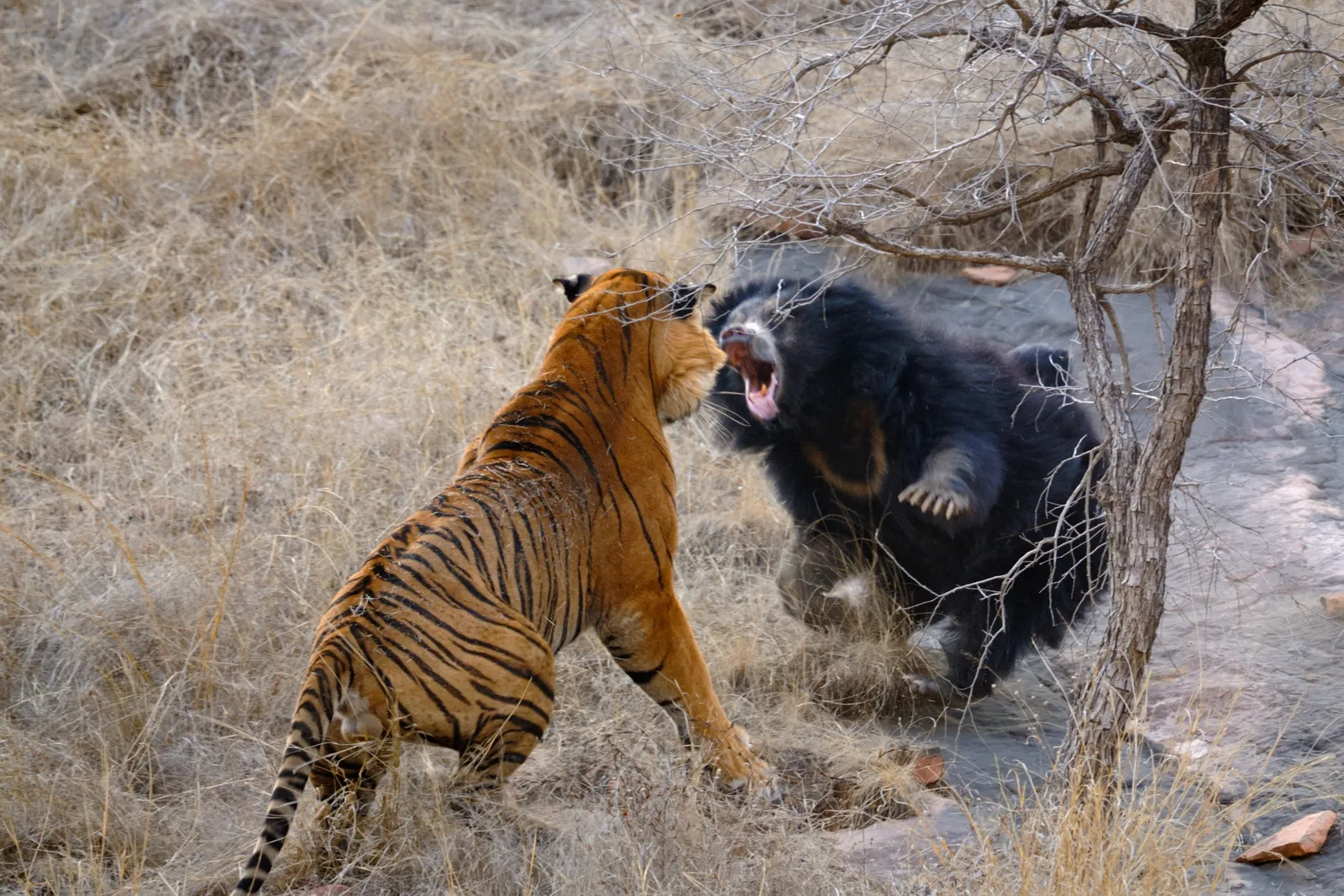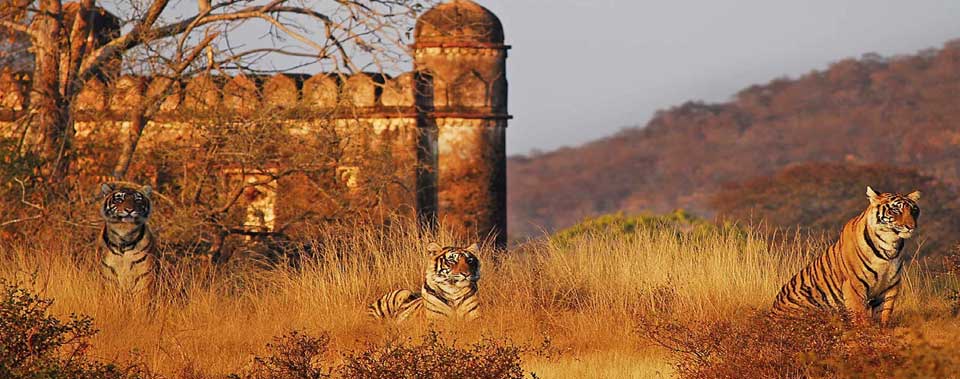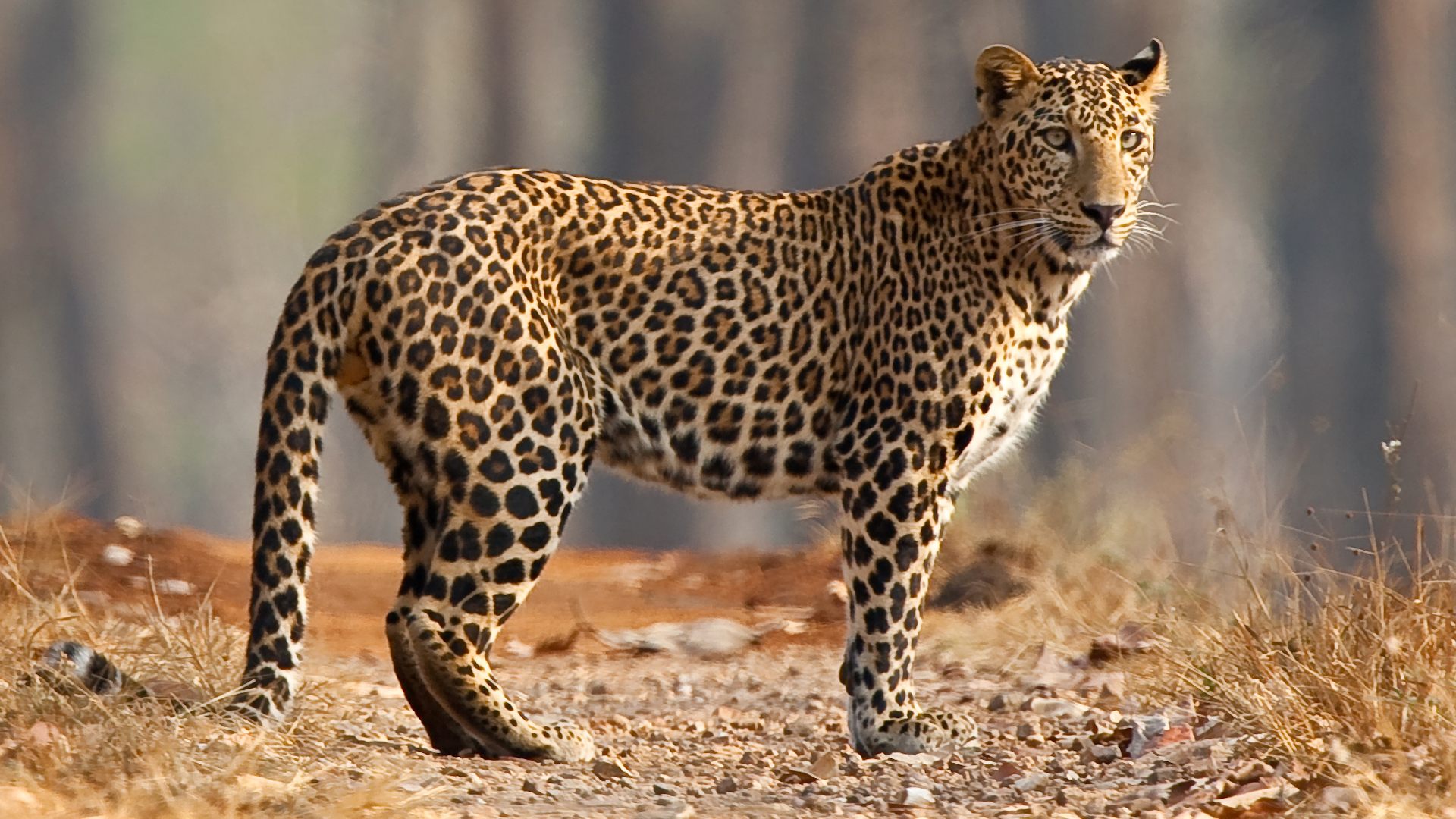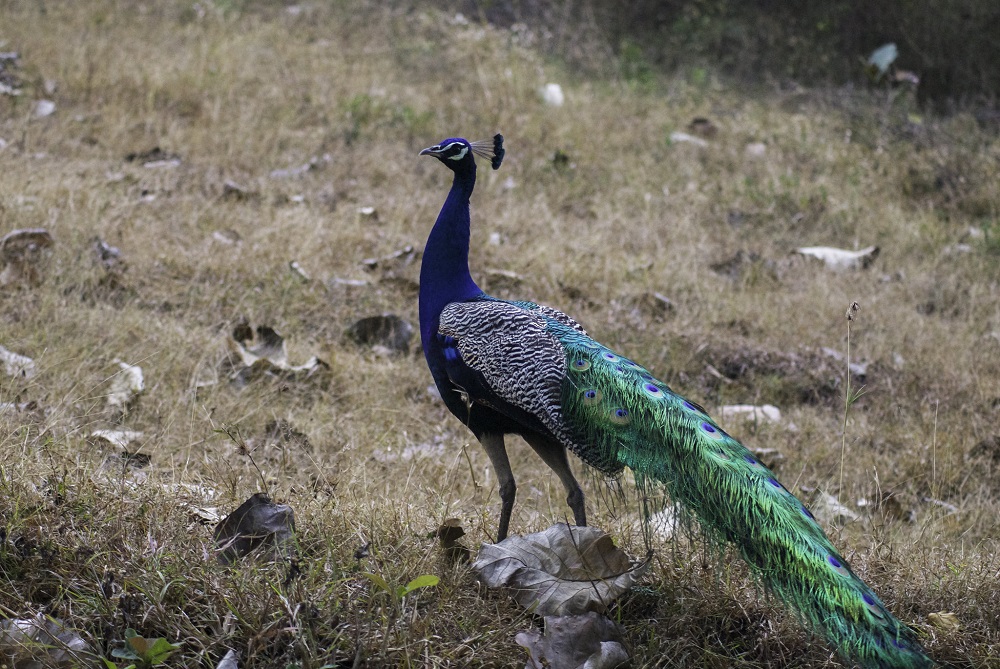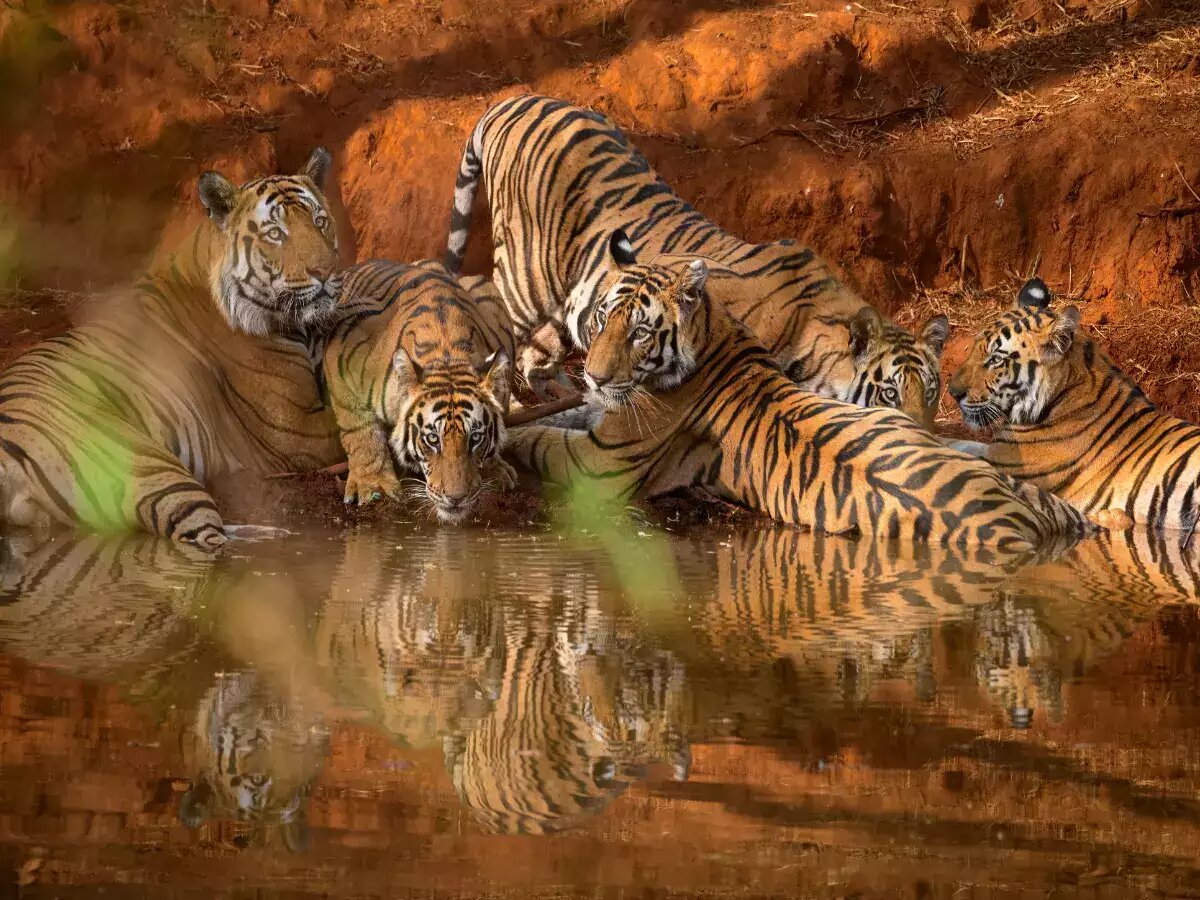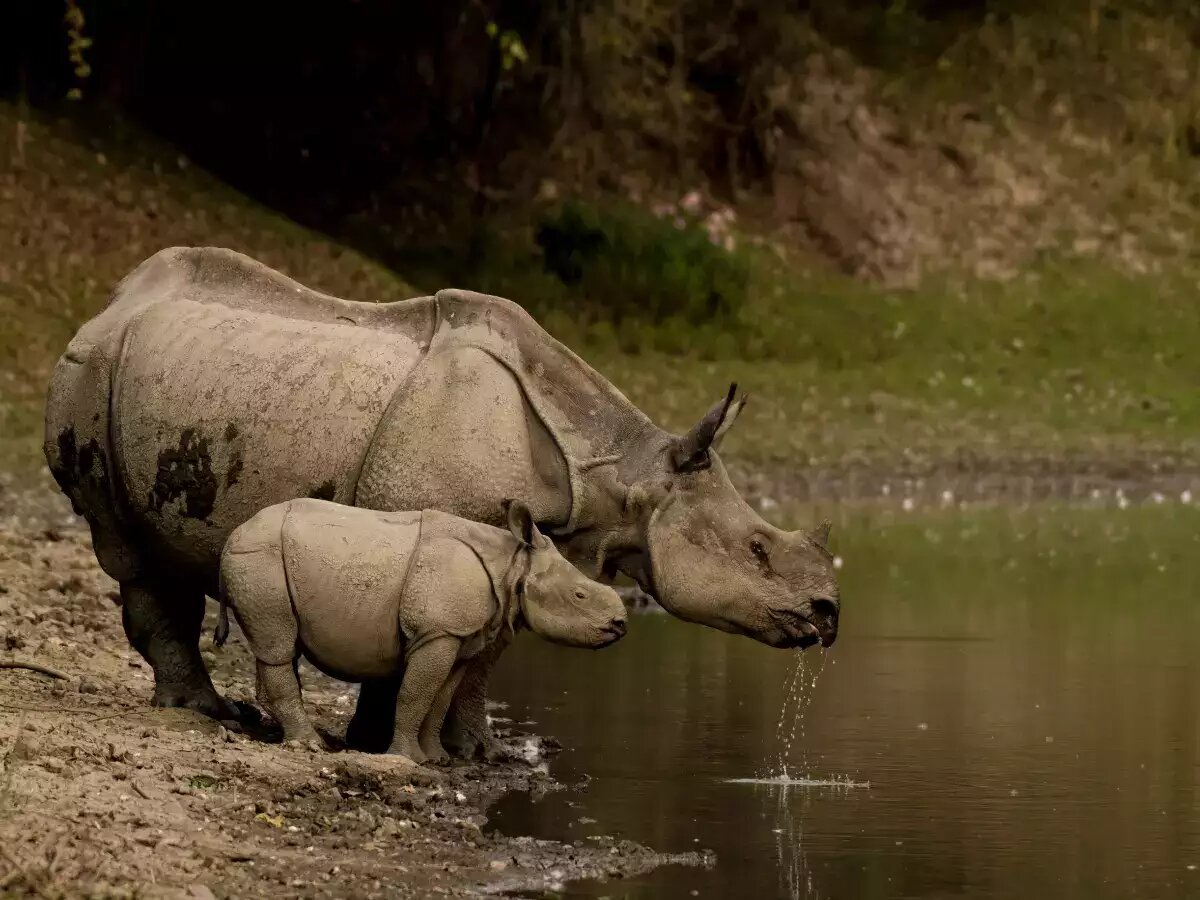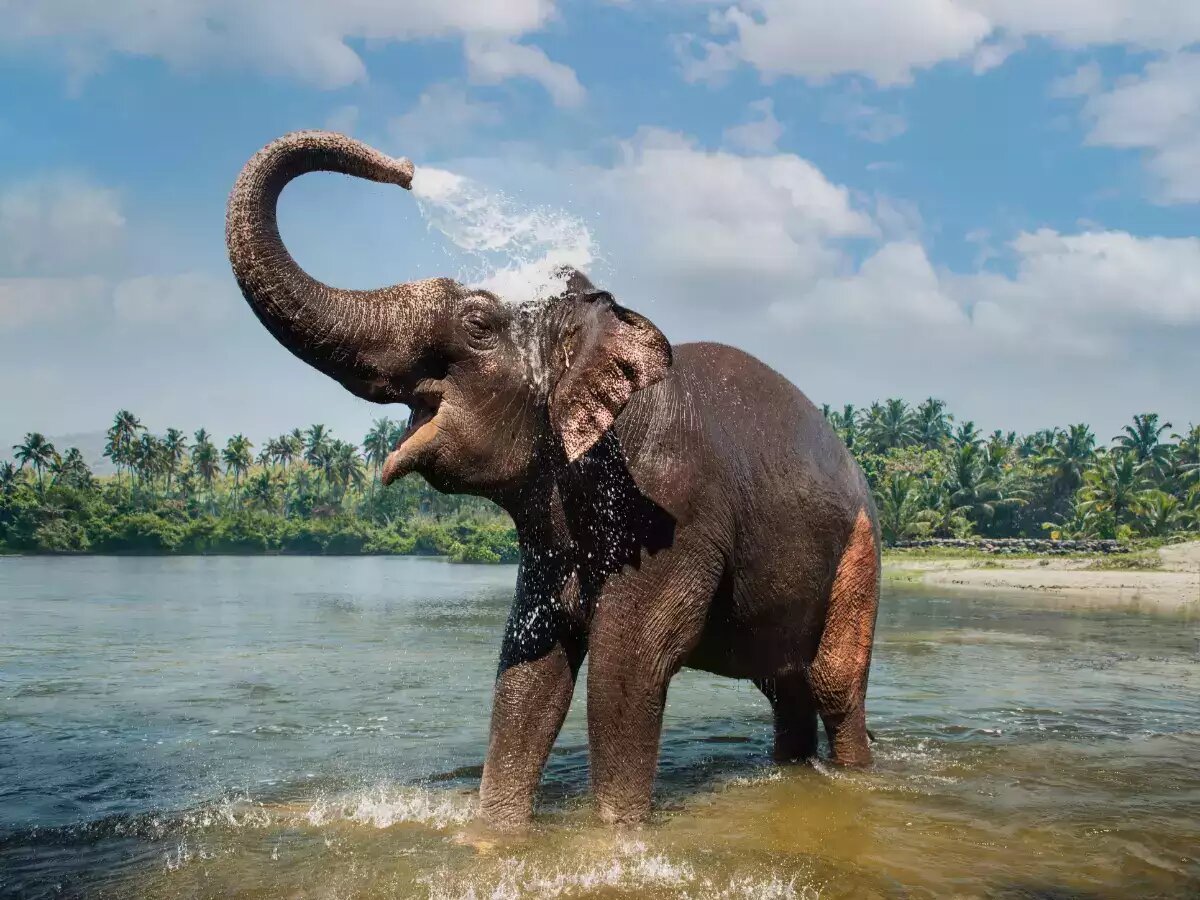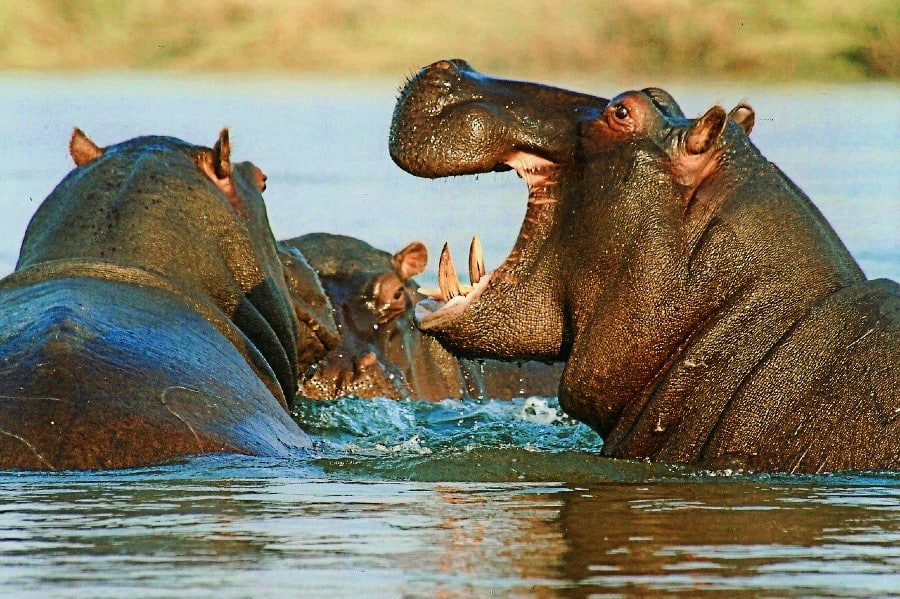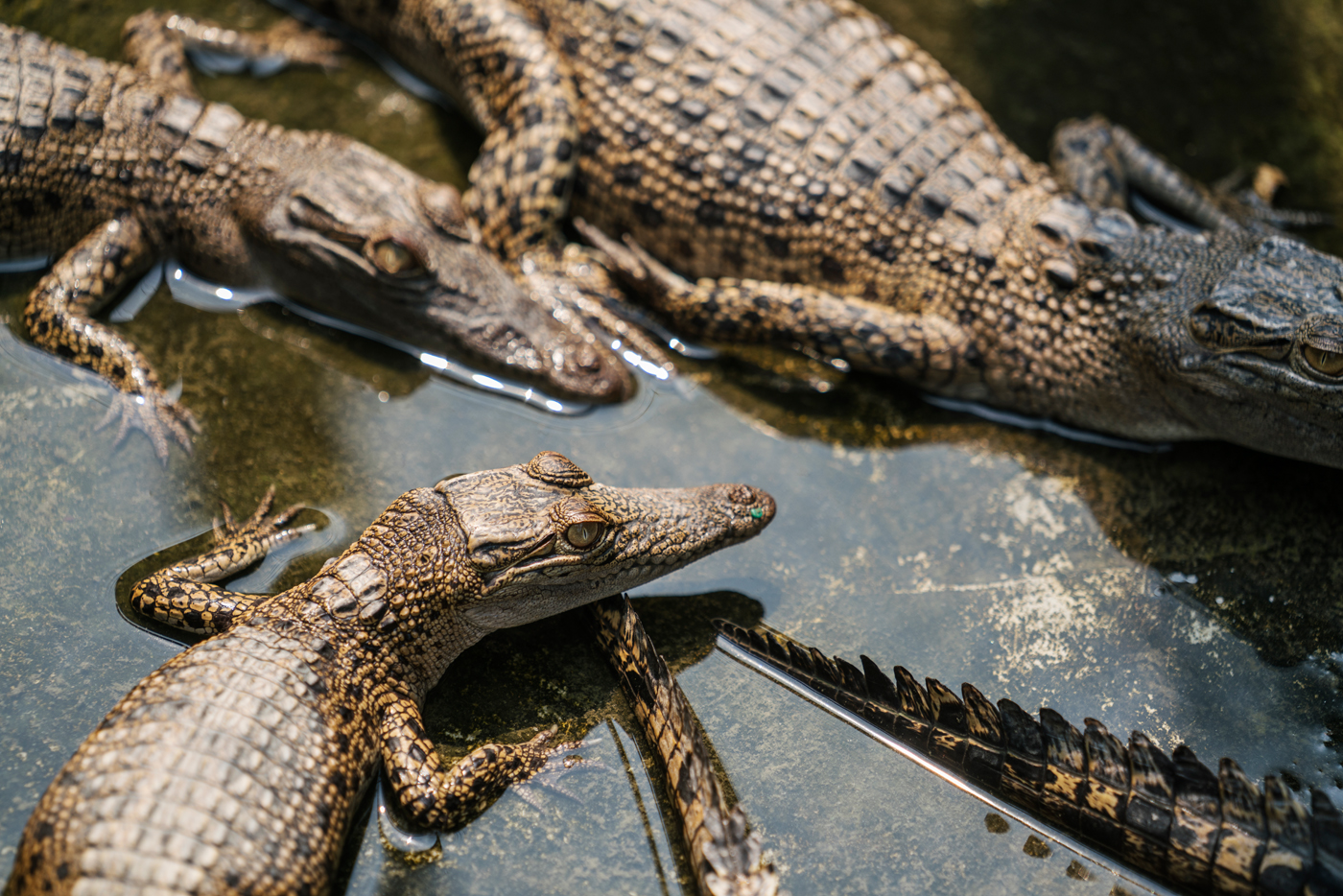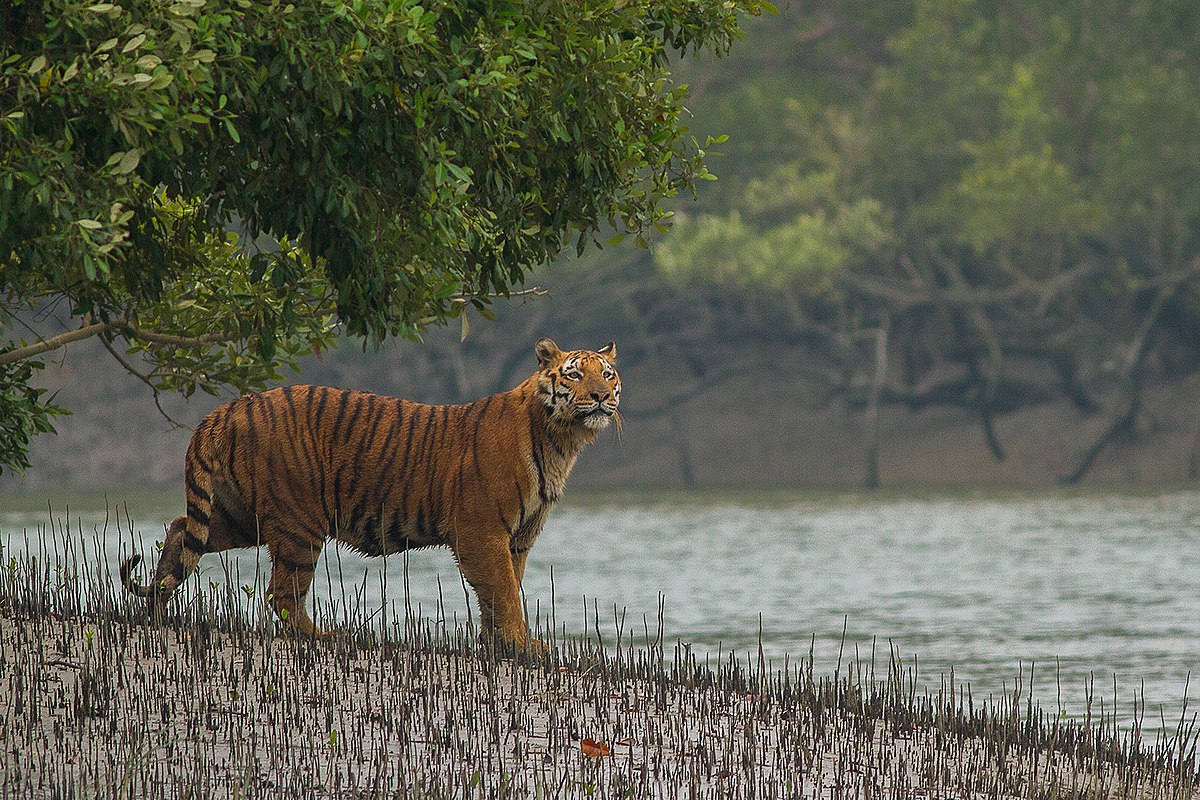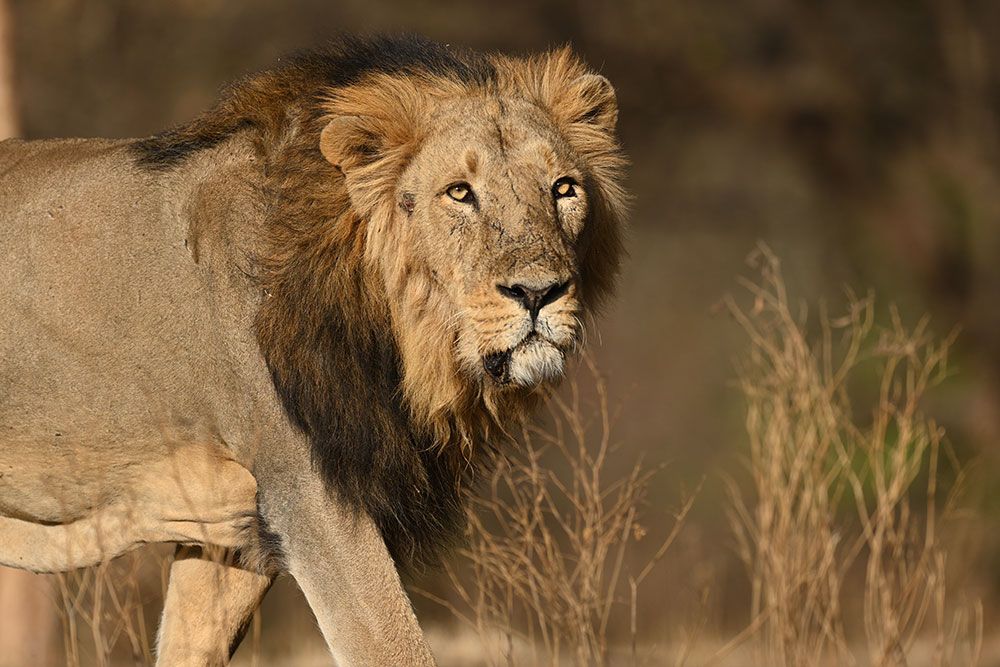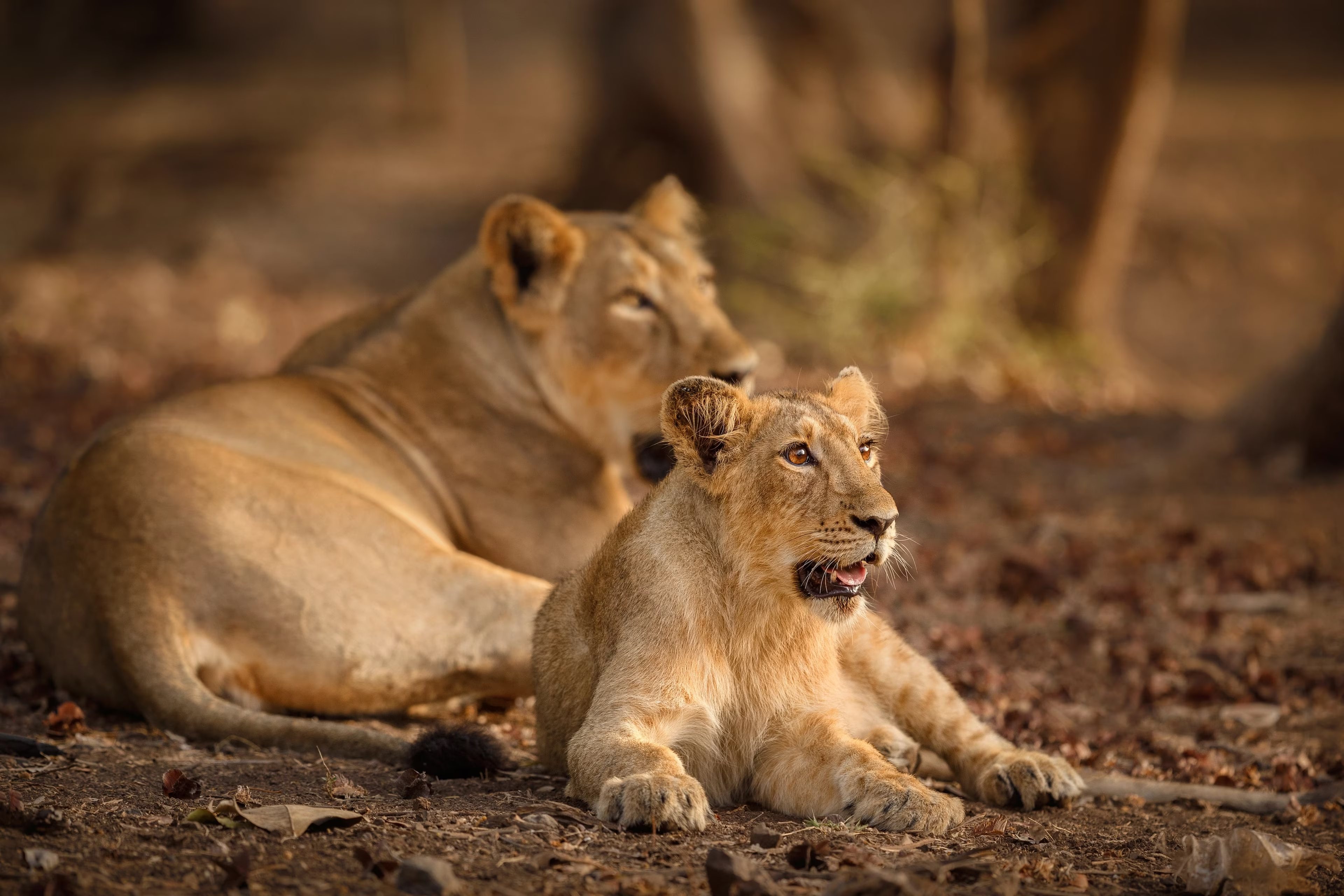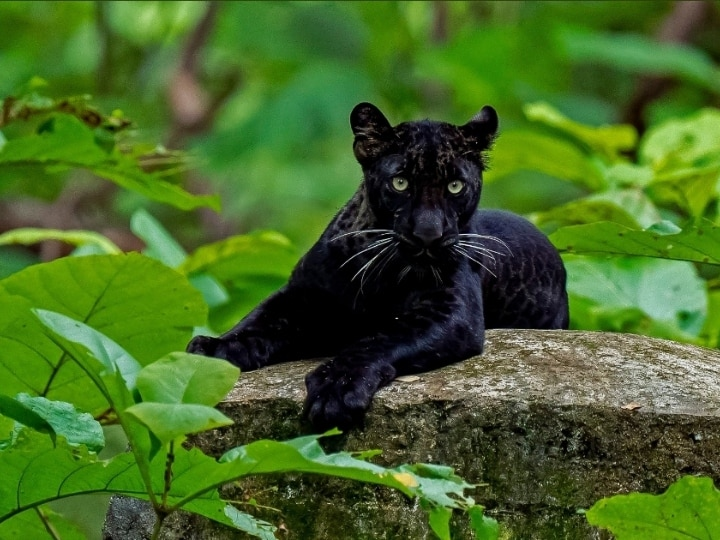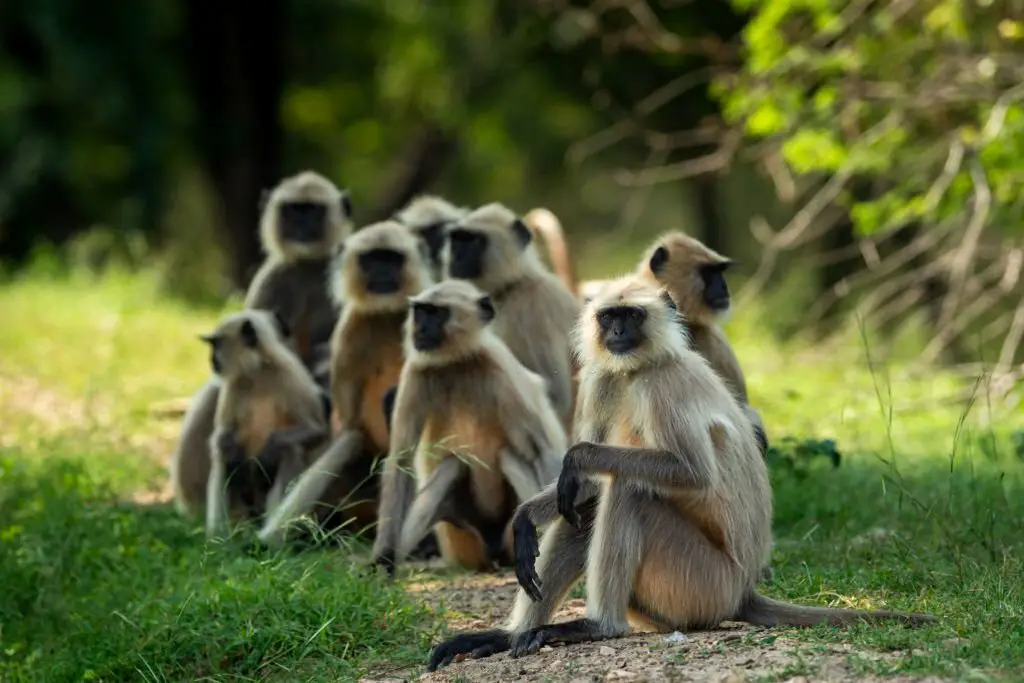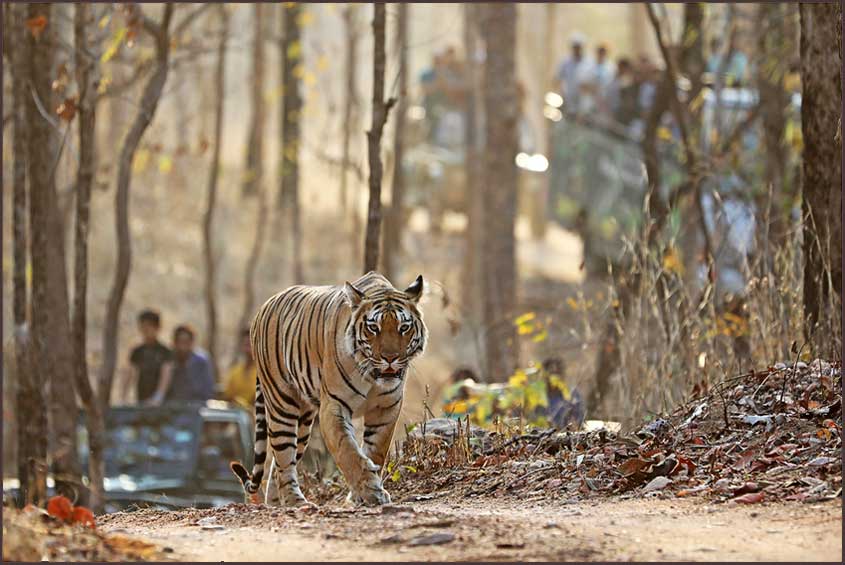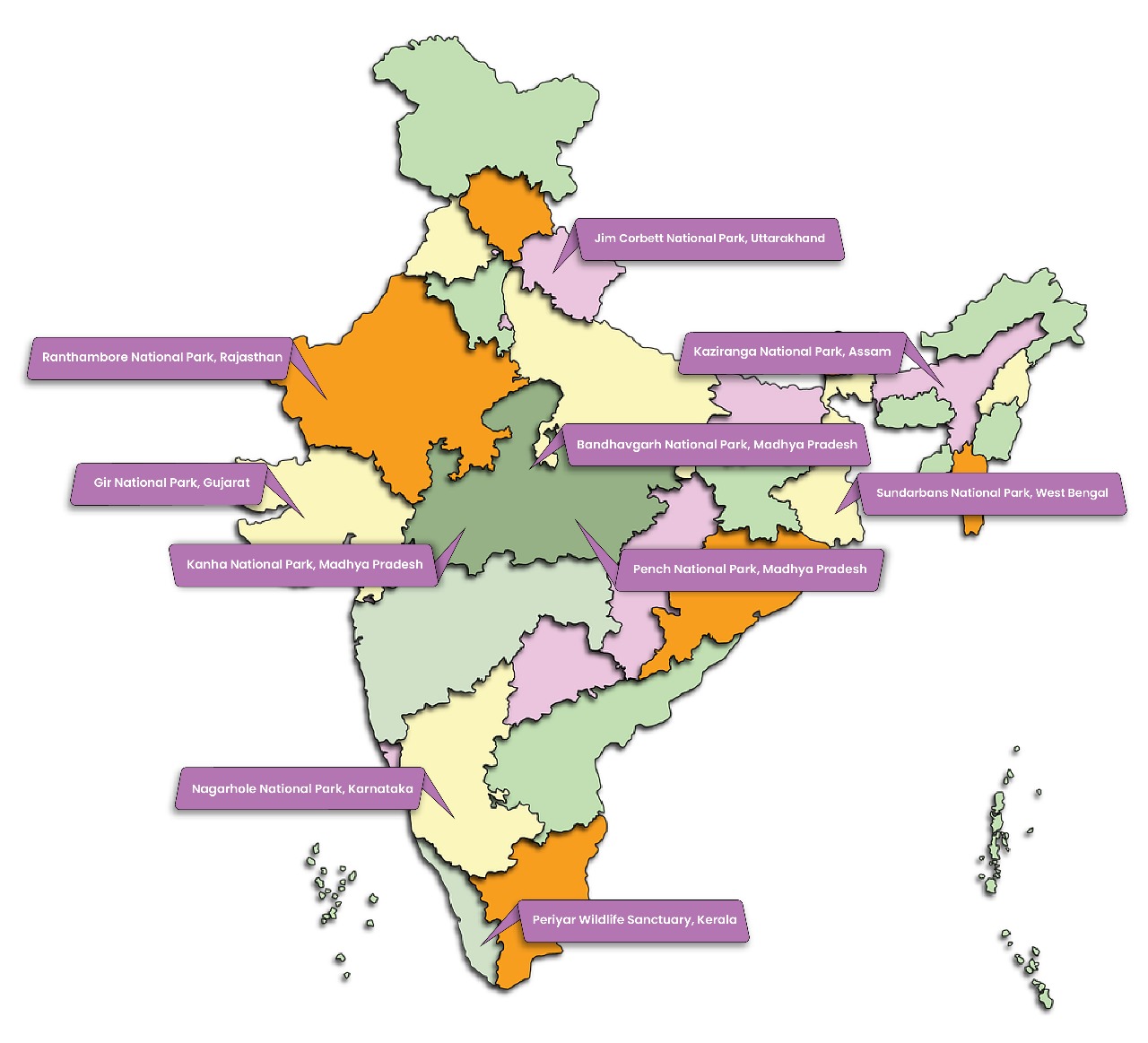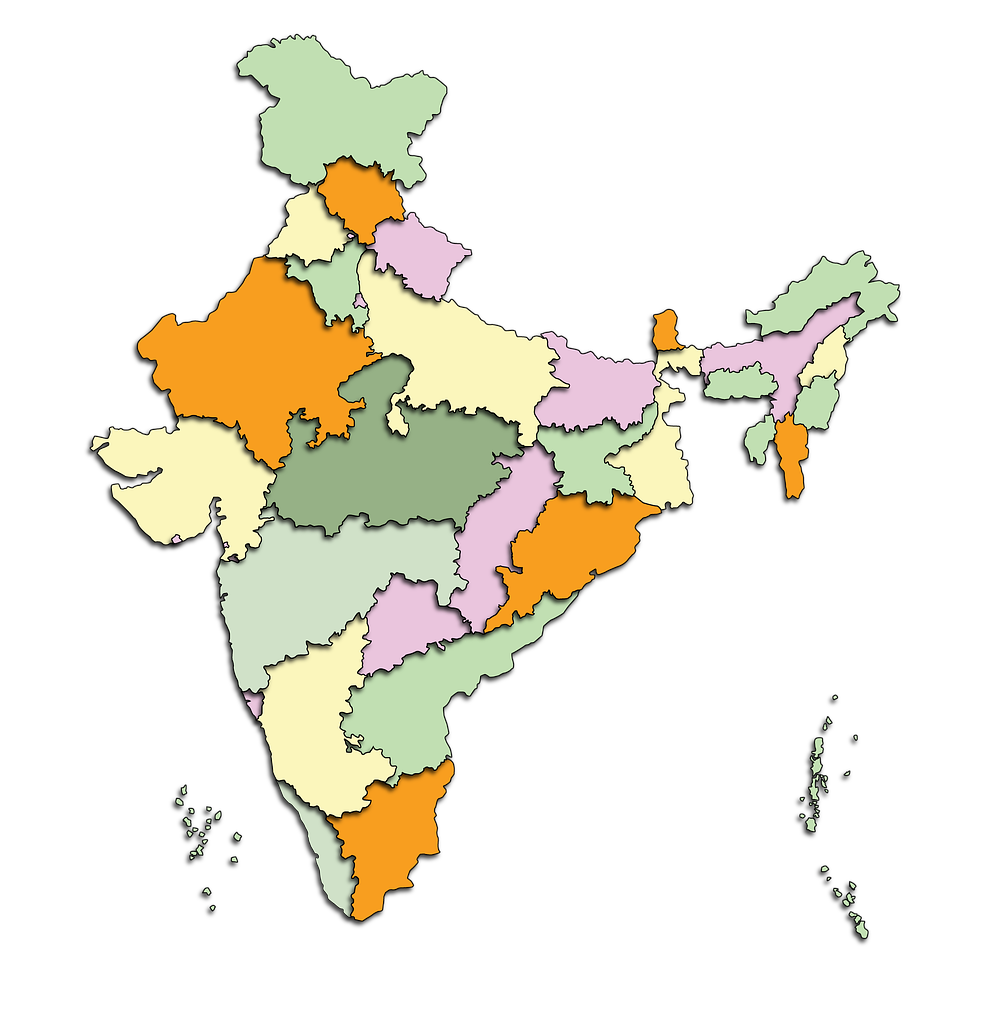| India is a biodiversity hotspot, home to a vast array of flora and fauna. The country boasts a remarkable network of protected areas that ensure the conservation of its unique wildlife. These areas are categorized into national parks and wildlife sanctuaries, each playing a crucial role in preserving India's natural heritage. |
|
| There are 104 national parks in India, encompassing a total area of approximately 40,500 square kilometres. National parks are designated to protect the ecological integrity of one or more ecosystems for present and future generations. They provide opportunities for scientific research, environmental education, and recreation, while strictly regulating activities to ensure minimal human impact. |
|
| Embrace Nature Responsibly |
| At Lotus DMC, we are committed to providing unforgettable wildlife experiences that emphasize the beauty and importance of India's natural heritage. Our tours are designed with a focus on conservation and preservation, ensuring that each visit supports sustainable practices and contributes to the protection of these precious ecosystems. Whether you're exploring a wildlife sanctuary or a national park, our expert guides offer insights and experiences that bring you closer to India's wild heart, all while promoting responsible tourism. |
| Did You Know? |
- India boasts the highest diversity of big cats, hosting four out of the five big cats: Bengal tigers, Asiatic lions, leopards, and snow leopards.
- India is home to four of the world's eight bear species: sloth bear, Asiatic black bear, Himalayan brown bear, and sun bear.
- The Great Indian bustard, one of the heaviest flying birds in the world, is found only in India and a few parts of Pakistan.
- The Western Ghats, a UNESCO World Heritage site, is one of the eight “hottest hotspots” of biological diversity in the world.
- Kaziranga National Park in Assam has the highest density of one-horned rhinoceroses in the world.
- Gir National Park is the only place in the world where Asiatic lions can be seen in their natural habitat.
|
| Top 10 National Parks and Wildlife Sanctuaries in India |
Jim Corbett National Park, Uttarakhand:
Nestled in the foothills of the Himalayas, Jim Corbett National Park is renowned for its Bengal tiger population and diverse flora and fauna. As India's oldest national park, it offers thrilling jeep safaris and serene riverine landscapes. |
| Known For: Bengal tigers, leopards, elephants |
|
- How to Reach: Nearest airport - Pantnagar (50 km), Nearest railway station - Ramnagar (12 km)
- Closure Period: June to mid-November
- Best Time to Travel: November to February
- Entry Fee: INR 200 for Indians, INR 1000 for foreigners
- Photography Charges: INR 50 for still cameras, INR 200 for video cameras
- Permissions: Required for night stays and safaris
- Where to Stay: Dhikala Forest Lodge, government rest houses, private resorts in Ramnagar
- What to Carry: Warm clothing (winter), light clothing (summer), binoculars, camera, sunscreen
- Equipment Rental: Available in Ramnagar for cameras and binoculars
|
| Ranthambore National Park, Rajasthan |
| Famous for its majestic tigers and historic ruins, Ranthambore blends wildlife with history. The park's dramatic landscapes and ancient fortresses provide a captivating backdrop for wildlife enthusiasts and photographers alike.
|
| Known For: Bengal tigers, leopards, hyenas
|
|
- How to Reach: Nearest airport - Jaipur (180 km), Nearest railway station - Sawai Madhopur (10 km)
- Closure Period: July to September
- Best Time to Travel: October to April
- Entry Fee: INR 100 for Indians, INR 1000 for foreigners
- Photography Charges: INR 200 for still cameras, INR 1000 for video cameras
- Permissions: Required for safari vehicles
- Where to Stay: Ranthambore Forest Resort, Aman-i-Khas, government guest houses
- What to Carry: Comfortable clothing, hat, sunglasses, insect repellent, camera
- Equipment Rental: Available in Sawai Madhopur for cameras and binoculars
|
| Kanha National Park, Madhya Pradesh |
| The inspiration behind Rudyard Kipling's "The Jungle Book," Kanha is a haven for wildlife, including tigers, leopards, and the rare barasingha. Its sprawling meadows and dense forests create an enchanting safari experience.
|
|
- Known For: Bengal tigers, barasingha (swamp deer), leopards.
- How to Reach: Nearest airport - Jabalpur (160 km), Nearest railway station - Jabalpur (160 km)
- Closure Period: July to October
- Best Time to Travel: November to June
- Entry Fee: INR 500 for Indians, INR 1500 for foreigners
- Photography Charges: INR 200 for still cameras, INR 1000 for video cameras
- Permissions: Required for entry and safaris
- Where to Stay: Kanha Earth Lodge, Banjaar Tola, government rest houses
- What to Carry: Light clothing (summer), warm clothing (winter), binoculars, camera, insect repellent
- Equipment Rental: Available at park gates
|
| Bandhavgarh National Park, Madhya Pradesh |
| Known for having the highest density of tigers in India, Bandhavgarh offers excellent sightings of these magnificent cats. The park's rugged terrain and ancient Bandhavgarh Fort add to its mystique. |
|
- Known For: Highest density of Bengal tigers, leopards
- How to Reach: Nearest airport - Jabalpur (200 km), Nearest railway station - Umaria (32 km)
- Closure Period: July to October
- Best Time to Travel: October to June
- Entry Fee: INR 400 for Indians, INR 2000 for foreigners
- Photography Charges: INR 200 for still cameras, INR 1000 for video cameras
- Permissions: Required for safaris
- Where to Stay: Tree House Hideaway, Bandhav Vilas, government guest houses
- What to Carry: Comfortable clothing, hat, sunscreen, camera, binoculars
- Equipment Rental: Available at the park entrance
|
| Kaziranga National Park, Assam |
| A UNESCO World Heritage Site, Kaziranga is famed for its population of one-horned rhinoceroses. The park's vast grasslands and wetlands are also home to elephants, wild buffalo, and a variety of bird species. |
|
- Known For: One-horned rhinoceroses, elephants, tigers
-
How to Reach: Nearest airport - Jorhat (97 km), Nearest railway station - Furkating (75 km)
-
Closure Period: May to October
-
Best Time to Travel: November to April
-
Entry Fee: INR 100 for Indians, INR 650 for foreigners
-
Photography Charges: INR 100 for still cameras, INR 1000 for video cameras
-
Permissions: Required for entry and safaris
-
Where to Stay: Wild Grass Lodge, Diphlu River Lodge, government lodges
-
What to Carry: Light clothing, hat, sunscreen, insect repellent, camera
-
Equipment Rental: Available in nearby towns
|
| Periyar Wildlife Sanctuary, Kerala |
| Located in the Western Ghats, Periyar is an evergreen paradise. Its serene lake and dense forests shelter elephants, tigers, and exotic birdlife, offering a tranquil yet exciting wildlife experience.
|
|
- Known For: Elephants, tigers, bird species
-
How to Reach: Nearest airport - Madurai (140 km), Nearest railway station - Kottayam (114 km)
-
Closure Period: Open year-round
-
Best Time to Travel: October to April
-
Entry Fee: INR 50 for Indians, INR 300 for foreigners
-
Photography Charges: INR 25 for still cameras, INR 300 for video cameras
-
Permissions: Required for trekking and boat safaris
-
Where to Stay: Thekkady Wild Corridor, Spice Village, government guest houses
-
What to Carry: Light clothing, rain gear (monsoon), camera, binoculars, comfortable shoes
-
Equipment Rental: Available in Thekkady for cameras and trekking gear
|
| Sundarbans National Park, West Bengal |
| The world's largest mangrove forest and a UNESCO World Heritage Site, Sundarbans is the royal Bengal tiger's elusive home. Exploring its waterways and dense mangroves is an adventure like no other.
|
|
- Known For: Bengal tigers, saltwater crocodiles, mangrove ecosystem
-
How to Reach: Nearest airport - Kolkata (100 km), Nearest railway station - Canning (48 km)
-
Closure Period: Open year-round
-
Best Time to Travel: November to March
-
Entry Fee: INR 60 for Indians, INR 200 for foreigners
-
Photography Charges: INR 50 for still cameras, INR 300 for video cameras
-
Permissions: Required for entry and boat safaris
-
Where to Stay: Sundarban Tiger Camp, Government lodges
-
What to Carry: Light clothing, insect repellent, camera, binoculars, sunscreen
-
Equipment Rental: Available in nearby towns
|
| Gir National Park, Gujarat |
| The only place in the world where you can see Asiatic lions in their natural habitat, Gir is a testament to successful conservation efforts. Its rugged hills and diverse fauna make it a must-visit for wildlife enthusiasts. |
| Known For: Asiatic lions, leopards |
|
- How to Reach: Nearest airport - Rajkot (160 km), Nearest railway station - Junagadh (65 km)
-
Closure Period: June to mid-October
-
Best Time to Travel: December to April
-
Entry Fee: INR 100 for Indians, INR 500 for foreigners
-
Photography Charges: INR 100 for still cameras, INR 1000 for video cameras
-
Permissions: Required for safaris
-
Where to Stay: Gir Jungle Lodge, The Fern Gir Forest Resort, government guest houses
-
What to Carry: Comfortable clothing, hat, sunglasses, camera, binoculars
-
Equipment Rental: Available at park gates
|
| Nagarhole National Park, Karnataka |
| Part of the Nilgiri Biosphere Reserve, Nagarhole boasts a rich variety of wildlife, including tigers, elephants, and leopards. Its dense forests and winding rivers offer a picturesque and thrilling safari experience.
|
|
- Known For: Tigers, elephants, leopards
-
How to Reach: Nearest airport - Mysore (96 km), Nearest railway station - Mysore (96 km)
-
Closure Period: Open year-round
-
Best Time to Travel: October to May
-
Entry Fee: INR 250 for Indians, INR 1000 for foreigners
-
Photography Charges: INR 100 for still cameras, INR 500 for video cameras
-
Permissions: Required for safaris
-
Where to Stay: Kabini River Lodge, Red Earth Kabini, government lodges
-
What to Carry: Light clothing, camera, binoculars, insect repellent
-
Equipment Rental: Available in Mysore
|
| Pench National Park, Madhya Pradesh |
| Another inspiration for "The Jungle Book," Pench's teak forests and riverine landscapes are teeming with wildlife, including tigers, leopards, and a plethora of bird species. |
| Known For: Bengal tigers, leopards, wild dogs (Dholes), Indian bison (Gaur), various bird species
|
|
- How to Reach: Nearest airport -Nagpur (93 km) , Nearest railway station - Seoni (30 km) and Nagpur (90 km)
-
Closure Period: July to September (monsoon season)
-
Best Time to Travel: November to June, with the peak season being February to April
-
Entry Fee: INR 250 for Indians, INR 1500 for foreigners
-
Photography Charges: INR 250 for still cameras, INR 500 for video cameras
-
Permissions: Required for safaris; entry permits can be booked online in advance or obtained at the park gates
-
Where to Stay: Pench Tree Lodge, Taj Baghvan, Tuli Tiger Corridor, Pench Jungle Camp, Mowgli's Den, Kipling's Court
-
What to Carry: Comfortable clothing in neutral colors, hats, sunscreen, insect repellent, binoculars, cameras with extra batteries and memory cards,
water bottles -
Equipment Rental: Available in local towns and at some resorts
|
| More Fascinating ‘Did You Know?’ Facts |
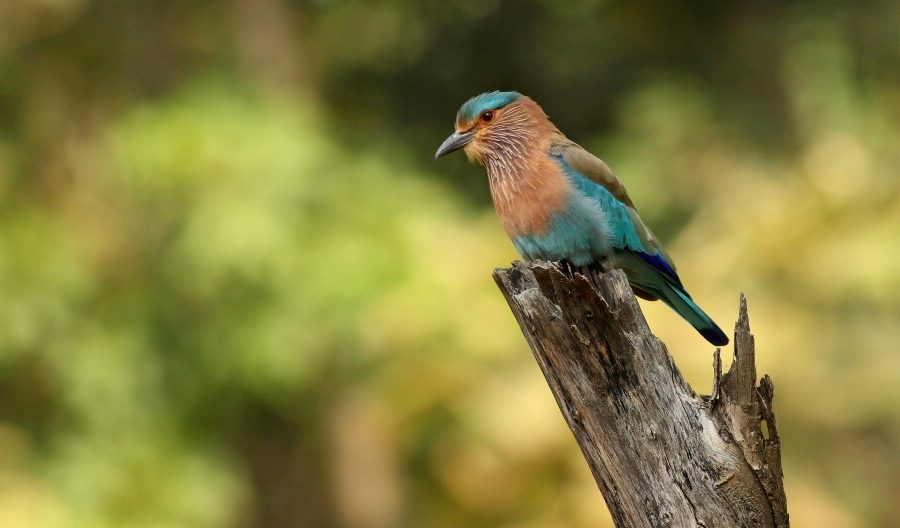
- Kaziranga National Park is not only famous for its one-horned rhinoceroses but also has the highest density of tigers among protected areas in the world.
- Periyar Wildlife Sanctuary is one of the few places where you can see elephants swimming in their natural habitat.
- Sundarbans National Park is the largest mangrove forest in the world and is home to the largest population of Bengal tigers.
- Jim Corbett National Park was the first national park established in India in 1936, originally named Hailey National Park.
- Ranthambore National Park features the Ranthambore Fort, a UNESCO World Heritage site, offering a unique blend of history and wildlife.
|
